This homemade Italian Meatball Recipe is easy to throw together, amazing in a variety of dishes, freezer friendly and it uses a surprise but amazing ingredient!
This post was sponsored by the American Lamb Board. All opinions expressed are my own. Read more about sponsored content on this website here.
You all know by now that I only work with companies I love, and let me tell you – I have had the absolute best time working with American Lamb on this post! We both had a common goal when it came to the post: share a real-life story with you about lamb so you can really understand where – and who – your food is coming from.
American Lamb set me up with Jenny Osguthorpe, she and her husband Brad own Circle JB Ranch and Livestock, a division of the Osguthorpe Ranch run by Brad’s father, Steve. They were nice enough to invite me out to their home farm and then take me on a tour of the nearest rangeland of ewes and lambs.
As we talked about sheep, family, and farming I realized that this homemade Italian meatball recipe was the perfect pairing for this story. Obviously, because it uses lamb, but also because my Italian meatball recipe represents family and tradition – two things that are also incredibly important to the Osguthorpe’s and how they run their sheep ranch.
My homemade Italian meatball recipe is based off my grandmother’s recipe, and while most of my recipes have been Americanized in one way or another, our Italian heritage of family and food runs deep through all of our veins. My heritage is what inspires me, what motivates me, and it’s something I hope I can pass on to my children.
The Osguthorpe’s hope these very same things when it comes to their ranch. They are stewards of the land – they believe in raising a healthy and sustainable product, but also maintaining sustainability throughout the western rangelands where their sheep graze. I was amazed over and over at the care and detail they put into every aspect of their farm. They want their children and grandchildren to be able to carry on their family’s legacy of raising sheep and caring for the land.
They not only care for and raise a sustainable and nutrient-dense product in the form of lamb, the wool and lanolin from the wool is used in clothing, insulation, lotions, and so much more. In addition, they help maintain our natural resources and public lands by working closely with the owners or government on grazing patterns, plant management, waterways, and even fencing.
Another strong value we have been taught through our Italian heritage is hospitality. There are always enough seats at the table and food in the pot for anyone and everyone to be welcome in our home. Again, I was reminded of this heritage as I met the herdsmen who stay with the sheep in the mountains and are a vital part of the Osguthrope’s ranch. I was touched by the sweet bond between the Osguthorpe’s and their herdsman. These men are not members of their family, usually, they are from Peru and while both parties have extensive government and legal processes they must go through to be able to work together, it is much more than a business relationship.
Brad taught himself Spanish so he could communicate effectively with his herdsman. Steve and his wife, Vickie, visited Peru to learn more about the culture their herdsman come from and better understand them. The herdsmen are humble and so happy! They love what they do. It was such a pleasure to meet them and watch them work with the dogs they train to help herd the sheep. The herdsman I had the opportunity to meet was able to put his children through University by working on the ranch. Another great legacy!
I loved spending time with the Osguthorpe family, and I’m so happy I can share part of their story with you. When we look past what makes us different, we can find ways to relate to everyone around us. I hope I helped you get to know the family behind the lamb you buy in the grocery store. Don’t forget to follow them on Instagram and Facebook so you can learn even more. Here are some more pictures and facts about my trip!
- Bottle lambs at the family’s farm.
- Osguthorpe farm was bought years ago and the family worked with the city to change into a protected conservation area. They are working on another conservation area as well, because preserving their heritage and legacy is important!
- Rams grazing on cut grass land. They will go out for breeding with the herds soon!
- Loading hay into the commissary for the horses. The herdsmen and his animals need supplies every 5 days, so the Osguthorpe’s do a lot of driving!
- Hugo filling water up for his animals.
- Brad and Hugo visiting about the sheep, the range, and life in general.
- Meeting the herdsman and learning about his role and life on the range and ranch with the sheep.
- The sheep graze from July to October in the mountains and then graze the rest of the year on desert rangeland in a different part of the state.
- Sheep wagon on the range with a herding dog nearby. These herding dogs as well as the Livestock Guardian Dogs help keep the sheep safe from predators.
- Sheep on the range at a watering source.
- Sheep grazing on the range. The lambs will be weaned and sold for meat, some are kept for breeding. Meat lambs are raised on grass or alfalfa and silage, sometimes grain, depending on the feedlot. They only live there for a few months.
- A lamb watching from his herd. They were very curious! Because the Osguthorpe’s sheep graze year round, the meat has a great flavor and isn’t overly fatty.
- Moving salt to the commissary for the herdsman to put out for the sheep. The rangelands where the sheep graze are selenium deficient, so the salt ensures that the sheep have all the minerals they need.
- Restocking the commissary with animal feed – hay for the horses, dog food, salt for the sheep.
- Learning how to resupply water for the herdsmen and his animals.
- Brad and Jenny and their daughter resupplying water for one of their herdsmen. They are a hard working family!
I know some of you may be questioning cooking with lamb, but don’t be scared away! It’s delicious and this homemade Italian meatball recipe is a perfect introduction. As always, this recipe is easy and also makes a great staple in your freezer!
The only trick when making this Italian meatball recipe is to get the meat to the right texture. If the meatballs are too moist, they will fall apart when you cook them. If the meatballs are too dry, they won’t form balls well before cooking.
Once all the ingredients are mixed together, the texture should be slightly sticky and slightly firm and stay together well when you roll the meatballs. If it is too moist, it will be very sticky and smash easily. If the texture is off, you can always add more milk or cream if it needs to be wetter or more breadcrumbs if it needs to firm up.
Instead of frying the meatballs, I broil them! It saves so much time and energy. And mess! I usually make a double batch, broil everything and freeze what I’m not going to use immediately.
If you are freezing meatballs, freeze them on a baking sheet until very firm, about 2 hours. Then remove them from the sheet and place them in a container or zipper top bag. Easy!
How to use the Best Italian Meatball Recipe
Once your meatballs are made, there are endless possibilities! Here are a few of my favorite ways to use meatballs:
- The Best Homemade Marinara Sauce
- Better than Ikea Swedish Meatballs
- Italian Meatball Soup
- Make Meatball Sandwiches
- Put them in a pasta bake like this one or this one!
If you’re wondering where you can buy lamb, you can find wholesalers at this link from American Lamb. If you’re local to Utah, you can download a list of retailers by clicking here.
[et_bloom_inline optin_id=”optin_2″]
Italian Lamb Meatballs
Equipment
Ingredients
- 3/4 cup plain breadcrumbs
- 2 garlic cloves grated
- 1/4 cup cream see note
- 1/4 cup ricotta cheese see note
- 1 pound ground American lamb see note
- 1 egg
- 1 tablespoon dried onions onion powder can be substituted
- 3 tablespoons fresh basil, chopped 1 1/2 tablespoons if using dried
- 1 1/2 tablespoons fresh parsley, chopped 2 teaspoons if using dried
- 1 teaspoon salt
- 1/2 teaspoon pepper
Instructions
- In a small bowl combine the breadcrumbs, ricotta, and cream. Mix until evenly combined. Set aside.
- While the above mixture rests, combine the ground American lamb the rest of the ingredients in a large bowl and mix until just combined.
- Add the breadcrumb mixture to the American lamb mixture and mix well until everything is combined.
- The texture should be slightly sticky and slimy, not too dry and not too wet. Reference video for example.
- Shape the meatballs so they are roughly the same size, for 25-30 meatballs, use about 1 tablespoon of meat.
- Line meatballs on a broiler pan or a cookie sheet sprayed with baking spray or lined with parchment.
- Broil the meatballs on high for about 10 minutes or until they are nicely browned on top.
- The meatballs won't be cooked completely, so finish cooking them in whatever recipe you're using them for or flash freeze and then store in the freezer for future use!
Video
Notes
Nutrition
Looking for more great recipes?
- Instant Pot Beef Stew
- Alfredo Sauce Recipe
- Cinnamon Roll Recipe
- Homemade Biscuits
- How to Make Meatloaf
- Pasta Primavera
- Vegetable Soup Recipe
- Ham and Cheese Sliders
- Pork Chop Marinade
- Balsamic Vinaigrette
- Homemade Brownies
- Homemade Tomato Soup
- Baked Chicken Thighs Recipe
- Beef Short Ribs Recipe
- Poppy Seed Chicken
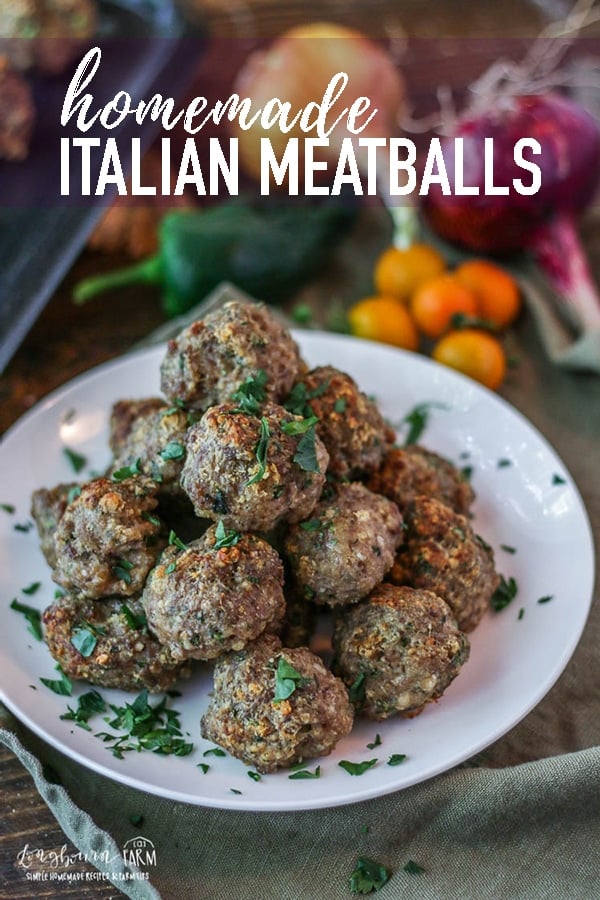
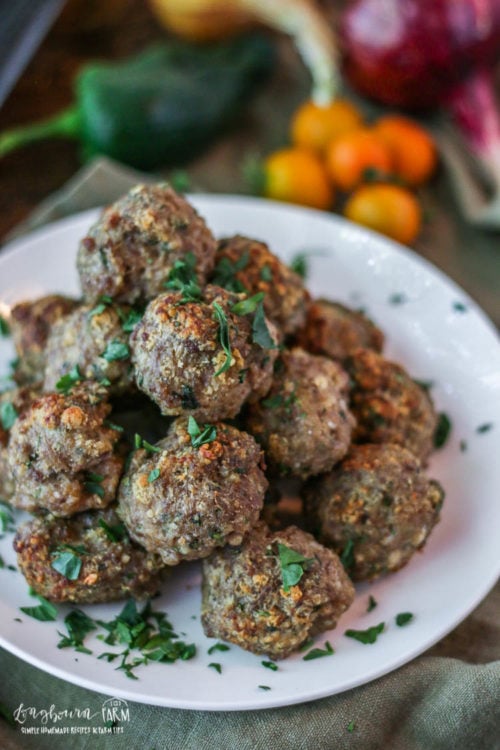
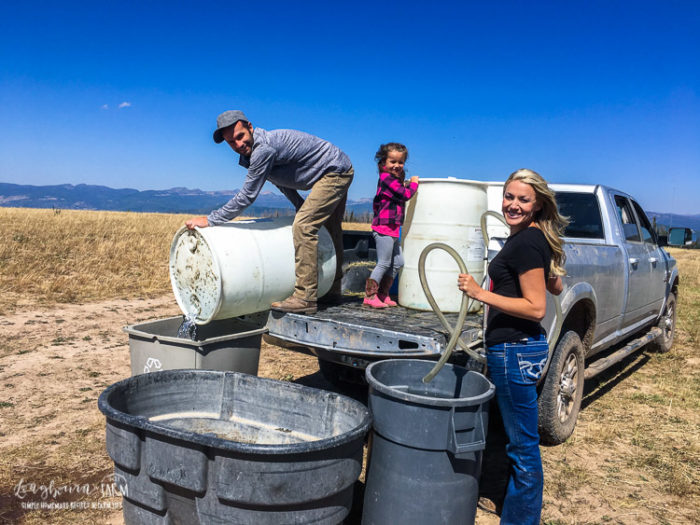
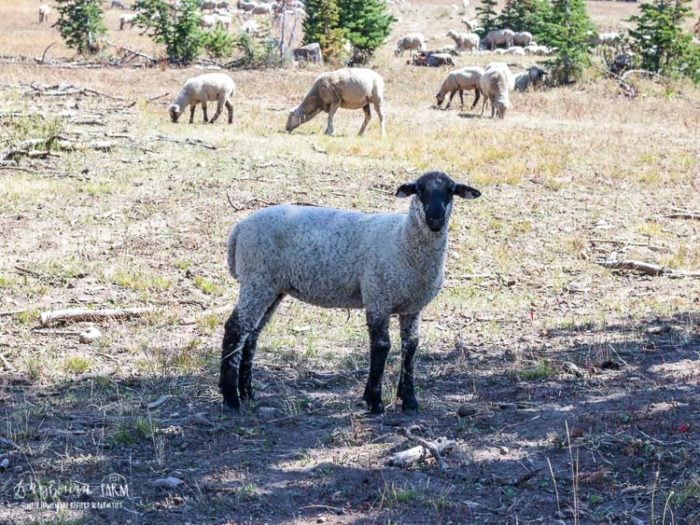

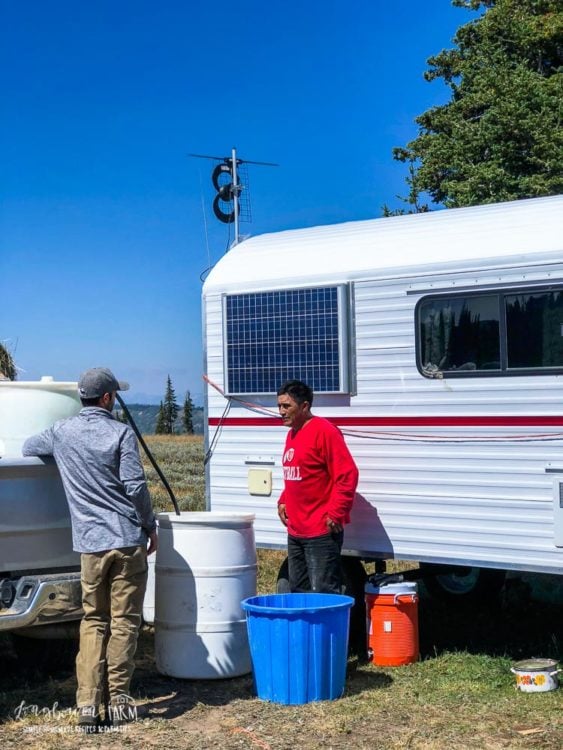
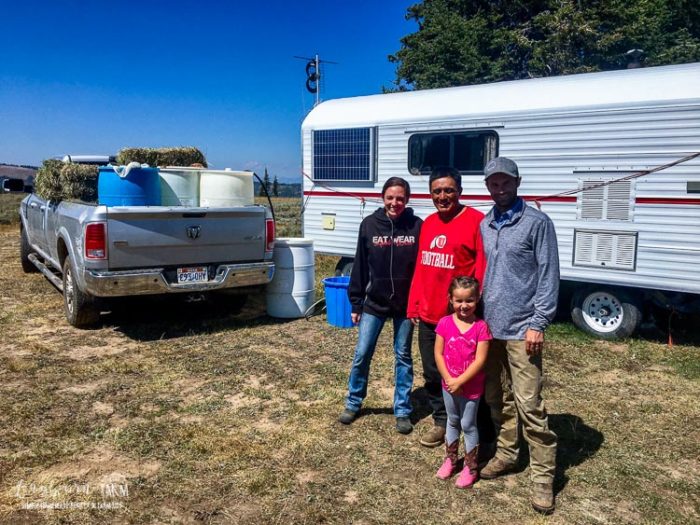
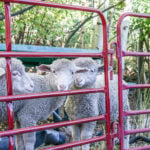

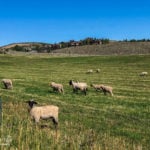
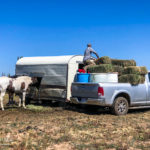






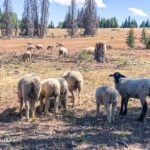
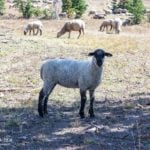
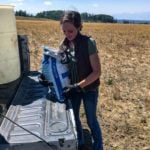
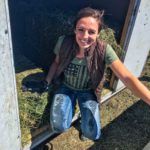
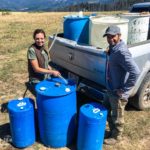
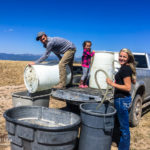
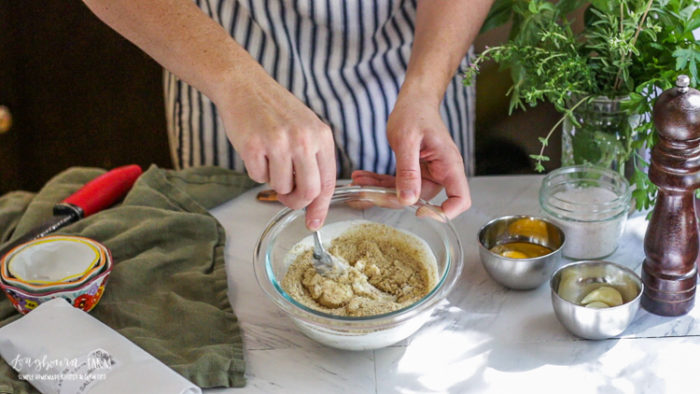
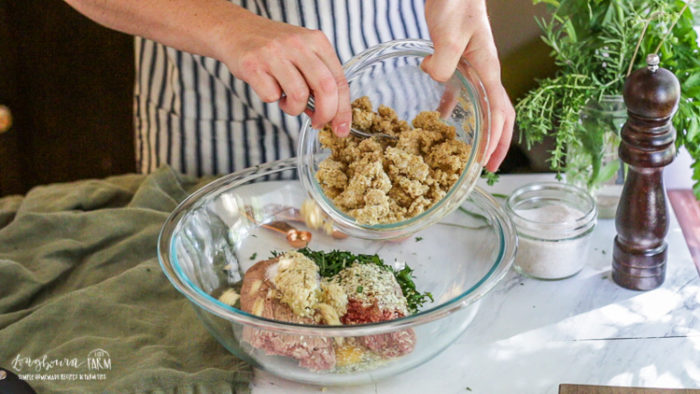
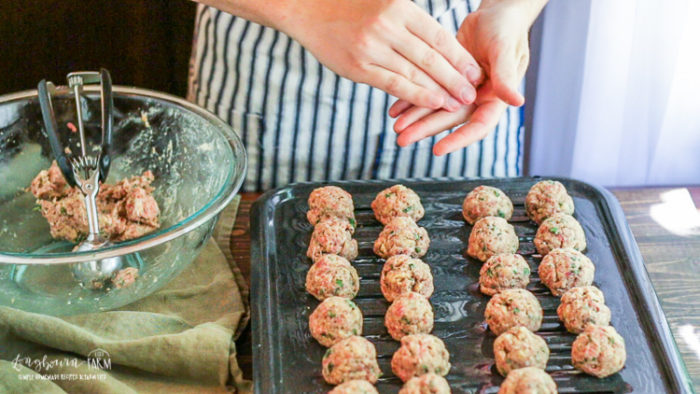
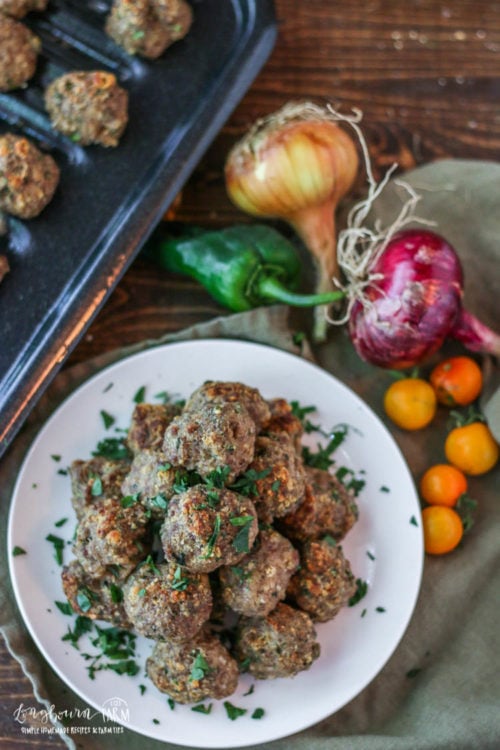
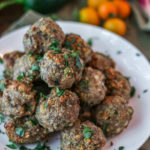


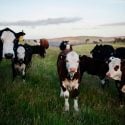


Alli says
Such a classic recipe!